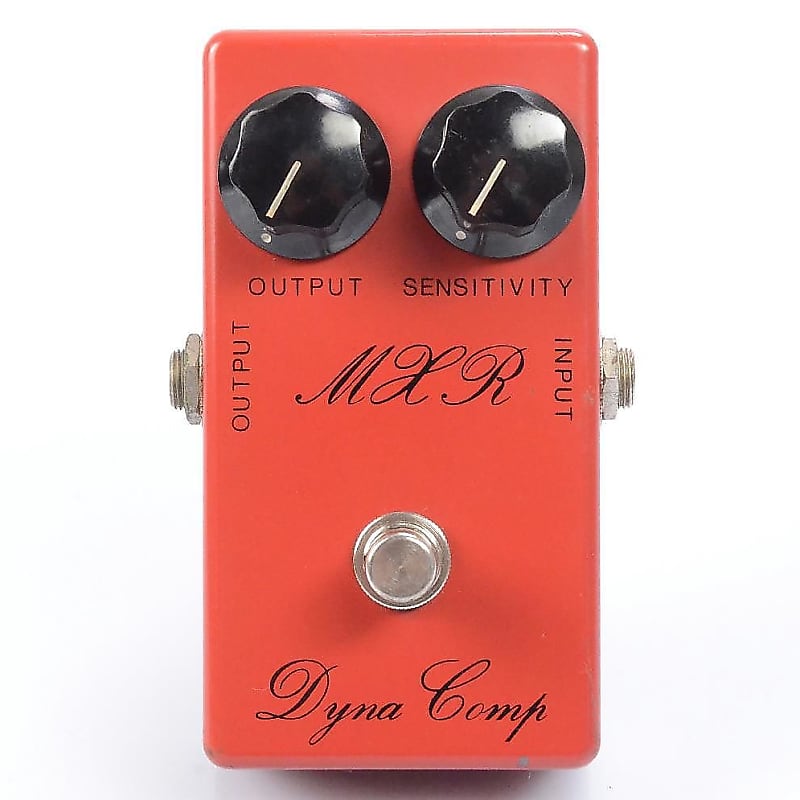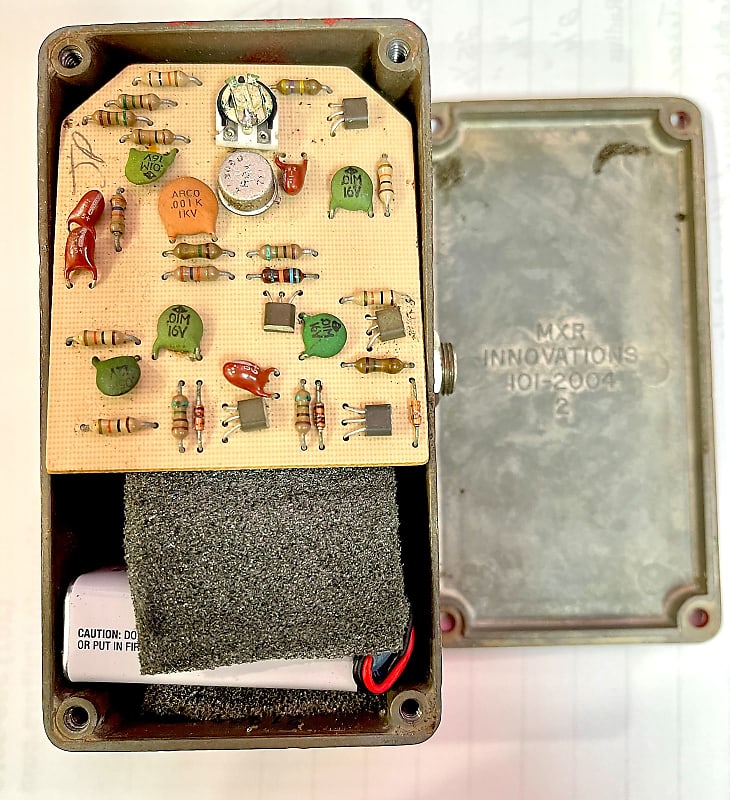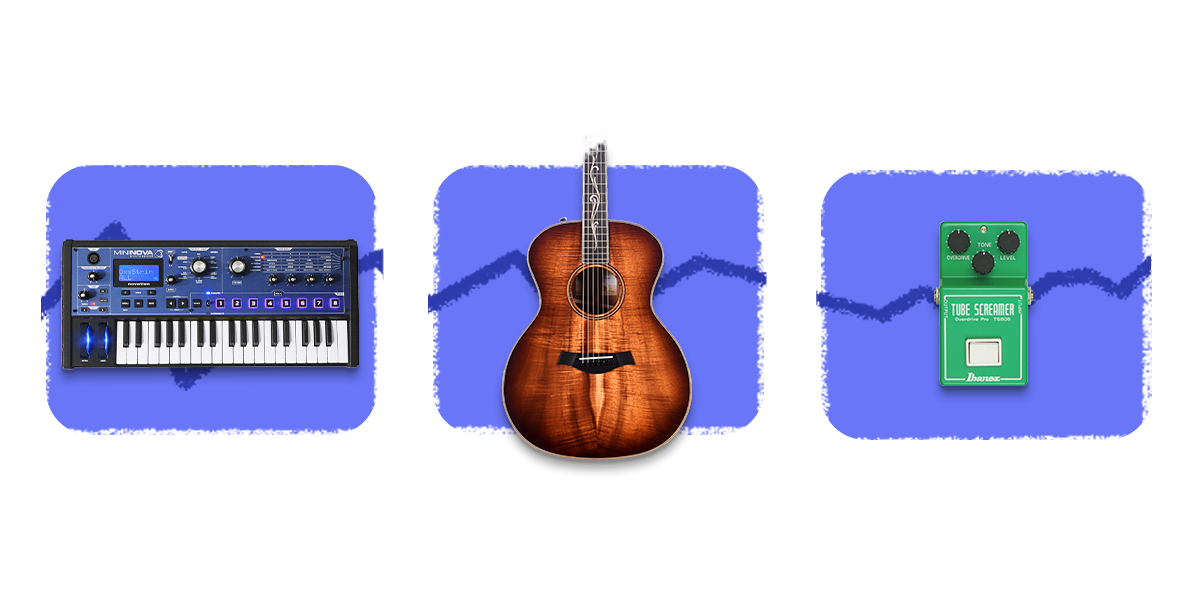
MXR MX-102 Script Dyna Comp 1973 - 1975

Own one like this?
Make room for new gear in minutes.
Own one like this?
Make room for new gear in minutes.Compare 0 Listings
Product Details
Gallery



Product Specs
| Brand | |||||
| Model |
| ||||
| Finish |
| ||||
| Year |
| ||||
| Made In |
| ||||
| Categories | |||||
| Pedal Format |
| ||||
Overview
Video
Price Guide
*Excludes Brand New, B Stock, Fair, Poor, and Non-functioning. Prices exclude shipping and tax/VAT/GST.
Product Reviews
More Information
In the world of compressors, there are two schools of thought. One ideal holds that compressors should subtle, ninja-like, there but not there. Fans of the Barber Tone Press and (to some degree) the Keeley Compressor fall into this camp. The other ideal holds that compressors are only worth their salt if they add some real texture of their own, building in a flavor that somehow does more than just rein in the peaks and valleys of the EQ. The king of this latter school of thought is the MXR Dyna Comp.
Released in 1972, the Dyna Comp was one of the first compressors on the market. It was the basis for the heralded Ross Compressor and paved the way for staples such as the Boss CS-2 and CS-3.
What's Not To Like?
One of the issues with the Dyna Comp is that it's not transparent. Vintage units with both knobs cranked can produce a sucking hiss through your rig. Strum a chord or play a run and you're not just getting an adjusted attack and decay, but an entirely different tone than what your guitar and amp would normally produce. This is both the Dyna Comp's strength and its Achille's heel. For players seeking to replicate the sound of classic Nashville recordings where a Dyna Comp was used, there is no question. Use the Dyna Comp. Get a noise suppressor or work your way around the artifacts. If you're trying to achieve the screaming sustain that defined some of David Gilmour's most memorable solos, the additional noise is often covered up anyway.
The other issue is that the Dyna Comp (at least the original units) had a fixed bite/squash ratio, meaning that as you turned up the Sensitivity knob, the increase in compression followed a fixed ratio. For fans of the Dyna Comp, this isn't a drawback. The original bite/squash ratio is a sound that defined compression for decades. Why mess with it? Though MXR does offer a Dyna Comp with a third knob for Attack (known as the Super Comp), many still opt for the charm and classic tone of the original two-knob set up.
Comp Club
Compressors, perhaps more than any other effect, are something that need to be experienced firsthand with your rig to parse the differences and narrow down what you like. The Dyna Comp is a pretty specific sound. We suggest that all guitarists give it a shot and maybe even keep one on hand alongside a more transparent compressor to round out your rig. This is an affordable pedal that can be sampled and sold easily if it's not your cup of tea.
What's the difference between the original script-logo Dyna Comp and the more recent block-logo models?
The original featured a CA3080 "metal can" IC that became extremely scarce during the 1980s and does not appear in current block-logo models (though it does appear in MXR's '76 Dyna Comp reissue). Aside from this, the script-logo and block-logo models (especially the earliest ones) sound close enough to most people that there is a unified "Dyna Comp sound" over the decades. The most recent block-logo model does have true-bypass and an LED, two common modern conveniences.
I noticed that MXR makes a few other compressors. How are they different from the Dyna Comp?
Alright. Let's go down the line and talk about why those models even exist. The MXR Super Comp is essentially just the guts of a Dyna Comp with an additional Attack knob so the initial bite can be preserved, allowing it to be used with hotter pickups that otherwise would coax a Dyna Comp to shut down the attack.
The MXR Custom Comp uses the CA3080 metal can IC as its primary chip with a RF-shielded harness, making it a little cleaner and quieter in its operation. This model also features true bypass.
The MXR Bass Compressor has more fine-tuning ability, with five knobs that adjust input and output volume as well as attack and release. Different compression ratios can be selected with the center knob. At the end of the day, however, these (like nearly all compressors) are merely derivatives of the addictive, original Dyna Comp.

